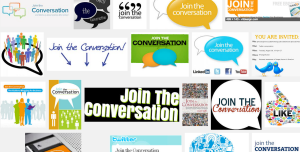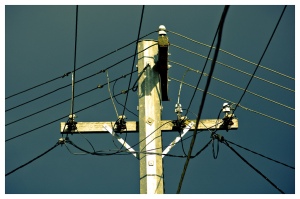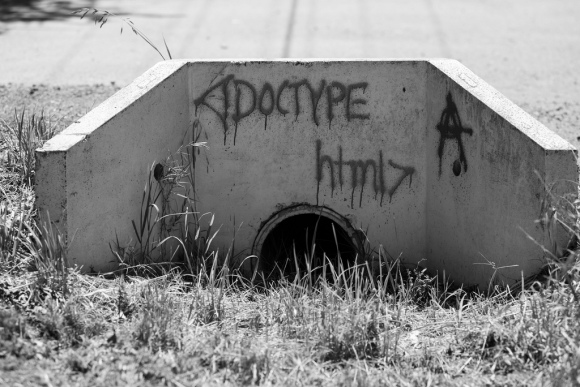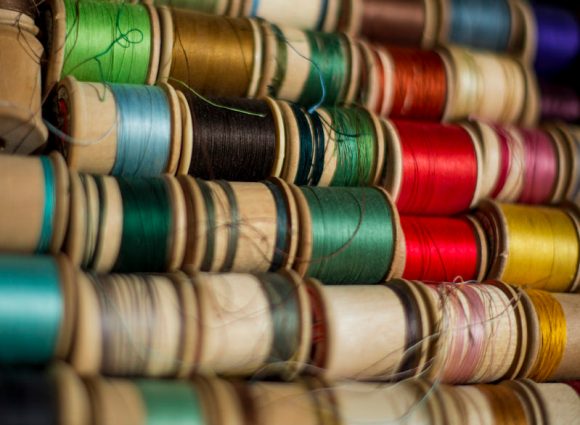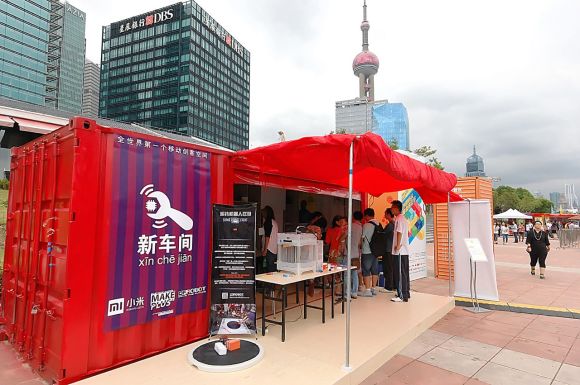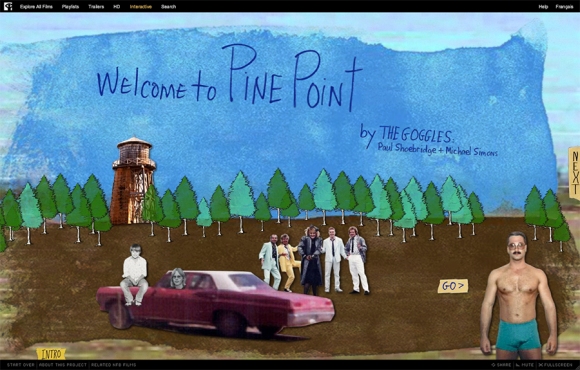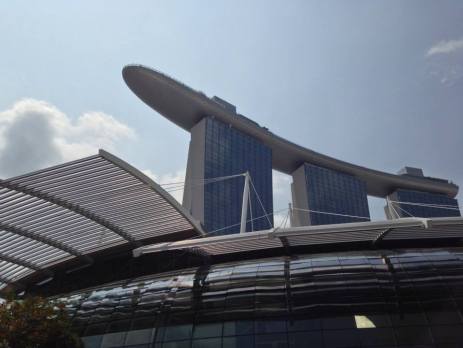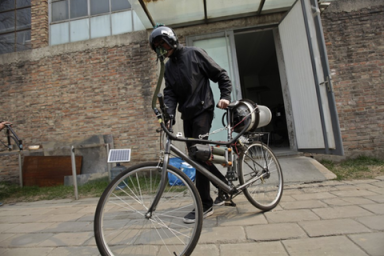Last week saw the launch of a new piece of advertising technology, hailed by all involved as “a game changer”. It turned out to be a parody of advertising technology, that then turned out to be the launch of a new advertising conference called Creative Fuel, to be held in Sydney in a few weeks time.
Timed nicely to meet the run-up to awards season, the video takes Christopher Guest-esque aim at gimmicky, technology-driven stunts that many agencies use to create work, (sometimes for a client, but not always), to put in case study videos, to enter into industry award shows.
Ant Keough’s delivery of the metaphor for the pace of technological change probably deserves ‘best in show’.
.
.
As a target for parody, however, this is fish-in-a-barrel stuff. And possibly a little off the pace. Canada’s Rethink agency used 3D printers last year to bypass award shows altogether. A couple of years before that, John St. (again from Canadia) skewered case study video culture with this tongue-in-cheek recap of the marketing campaign for Chelsea Bedano’s 8th birthday.
You can’t stop progress.
The Creative Fuel video, however, betrays a deeper unease within traditional creative agencies. After years of striving to stay abreast of emerging technologies, understand the implications and then put the technology to use for clients, agencies now appear to be saying “stop the world, I want to get off”.
And you can scarcely blame them. The pressure to deliver innovation for its own sake (already great), has been exacerbated by the rate of technological change and amplified by the firehose of instantaneous information (read: press releases). The spectre of new technology now has Creative Departments running away in desperation. In this video, quite literally.
After years of trying to integrate digital departments, hiring (or not, in the case of W+K) Creative Technologists and appointing Innovation Officers, the current rallying cry by ad agencies to ‘get back to ideas’ is actually a neat way of stepping off the treadmill, by calling the treadmill itself into question.
My fear is that it reintroduces a dichotomy between creativity and technology that is largely meaningless and, ultimately, counterproductive.
All creativity requires technology. Not all technology is new technology.
Beginning with fire, pretty much everything we use to express ourselves or to bring about change in the world (the broadest definition of creativity), is technology. If you go back far enough, you arrive at a place where that technology was new. All new technology goes through an experimental phase while we work out what to do with it. In almost all cases, the first thing we ask of any new technology is to replicate the functionality of the technology it’s supposed to replace.
One of the first regular uses of non-military broadcast radio was a live reading of the front page of the daily newspaper, word for word, interrupted by ads. Television started by filming and broadcasting plays, which were staged and performed just as they were in the theatre, except now interrupted by ads. The first time we got our hands on one of them new-fangled mobile phones, we dragged the thing downstairs walked around outside and rang our friends to tell them that we were calling them while walking around ON THE STREET! OMG!
Actually, OMG came much later, but still relied on technology for the delivery.
So it’s not surprising that one of the first things we thought of when we were presented with the possibility of a remote control helicopter drone was to literally strap a client’s product to it.
Variations on the same idea occurred to the marketing teams at Dominos, Coke and this Scottish bakery. So many ad-fuelled drones are taking to the skies, the FAA has had to step in and issue a ban.
Eventually, we get past the obvious stuff and start tinkering, experimenting. That’s actually called innovation, where we try stuff out, maybe have a happy accident or an unexpected collaboration. In our industry, we have to somehow incorporate the brand in our experiments, because that’s how we get it paid for, not dissimilar to Beethoven naming his concertos after his patrons. Some really useful drone-powered stuff appears to be in the works, it’s just that brands and agencies don’t seemed to be involved at this point.
Clearly, not all of this early-adopter advertising-funded experimentation with technology is great. In fact, the majority of it is relatively pointless. But, as the guys (and they are all guys) in the Creative Fuel video point out, that doesn’t stop us making some very slick video case studies and entering them into advertising award shows. It also doesn’t stop these award shows from handing these very slick video case studies for largely pointless (or worse, entirely made up) work a shiny trophy from time to time.
This may well be the part that is getting the furthest up the collective noses of the Creative Directors quoted in the Creative Fuel promo video. I’m not entirely without sympathy.
Don’t throw the bluetooth out with the arduino.
Rare is the individual able to grasp the full potential of a new technology first swing at the plate. While we were all sniggering at the ‘twats’ talking with themselves in teenspeak on Twitter, CP&B took the time to understand how people were using the technology in an informal way. They quietly scaled it up and created Twelpforce, making Best Buy one of the most accessible brands in the US and casually bagging a Titanium lion in the process.
It’s important to note that Twitter had already been going for almost four years and we’d seen a lot of relatively pointless, ad-funded crap on Twitter by this point. In fact, we still do. Some of it is even winning awards.
Absent from this (entirely manufactured) debate are the voices arguing for gimmicky campaigns running on obvious (and obviously new) technology. Which makes it hard to work out who exactly the Creative Fuse crew are railing against? People who like using technology in advertising? Gullible award juries? The clients who fund this sort of work?It’s not immediately clear. Maybe they’ll turn up to debate the point in a panel discussion on the day.
Let’s go to the video one more time
While it’s a fun (if a little lengthy) video and it’s working brilliantly as a piece of marketing against the target audience, it will be interesting to see how many put their hands in their pocket for a $600+ asking price that covers just a single day of presentations. By way of comparison, SXSW gets you five days of inspiration for around the same coin, admittedly it’s a long way from Sydney. TedX at the Opera House charged half that, if you were approved.
Although Reg Mombassa is always good for a story and anything featuring the work of Dr Suess gets a tick, it looks, at a distance, to be shaping up as a full day agree-a-thon.
For my money, I just can’t buy into the technology vs creativity argument as it’s presented by the Creative Fuel promotional material. This one’s a zero-sum game – one that can’t be changed.
There’s no one without the other. Technology is part of the creative process (and creativity is inherent in all technology). Terrible ideas are terrible ideas. Awards juries will sometimes fall for these terrible ideas when they are very well packaged (please try to remember which industry you’re working in before you allow yourself to become too upset by this). Nothing to see here, move along.
History, research and pretty much anyone writing seriously on the topic knows that there are many paths to creativity.
I just don’t believe running away from technology is one of them.
______________________________________________________________
About the Author: Barrie Seppings blogs about making things better – for clients, brands, agencies and humans. He is currently Regional Creative Director at Ogilvy Singapore and he likes boards surf, skate and snow. Follow him on the Twitter, connect on LinkedIn, or add him on Google+












